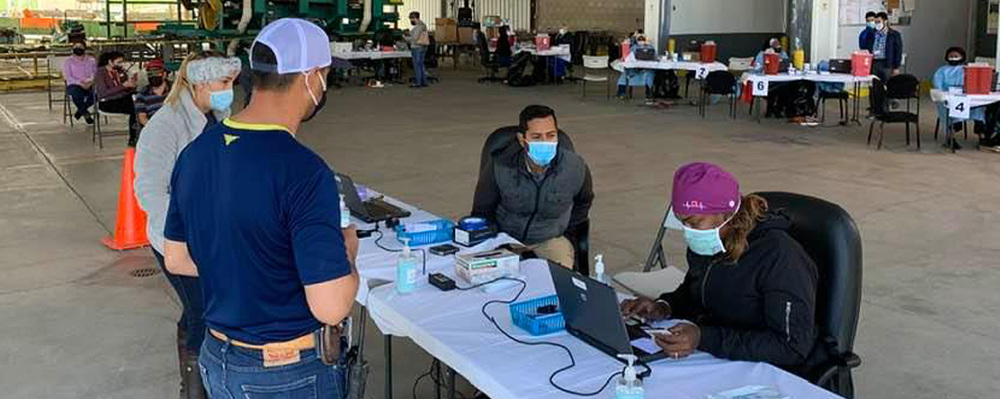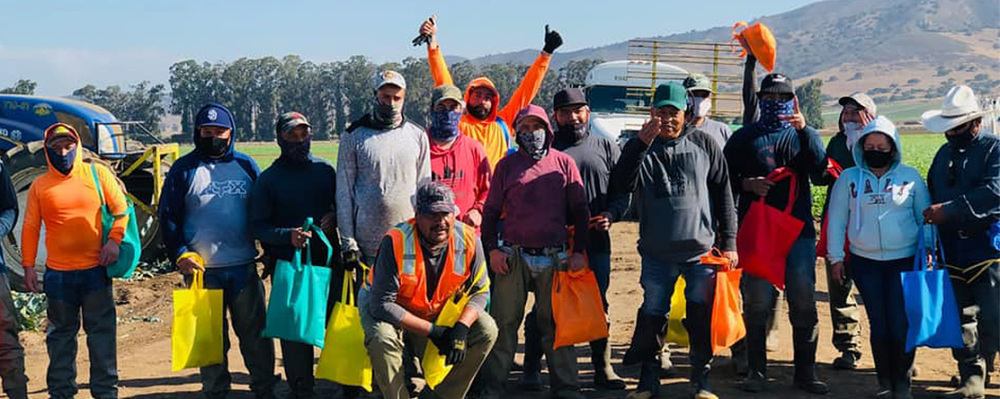
Brief: Responding to COVID & Building a Stronger Public Health Workforce
- Together Toward Health
Harder+Company Community Research
-
Focus Areas
Capacity Building & Leadership, Communicable Disease Prevention -
Issues
Workforce Development -
Expertise
Leadership Development -
Programs
Together Toward Health -
Strategic Initiatives
COVID-19, Vaccine Access & Equity
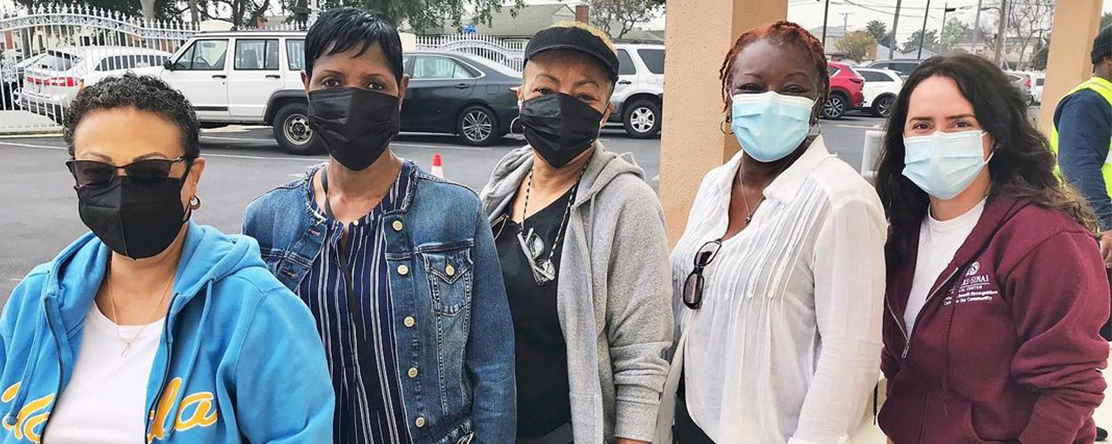
PHI’s Together Toward Health (TTH) is a statewide initiative that supports over 500 community-based organizations (CBOs) that work on reducing the spread of COVID-19 by strengthening COVID-19 education, testing, and vaccination access across California’s most impacted communities. Since its launch in 2020, TTH has disbursed over $33 million via 251 awards to 548 CBOs including churches, health centers, community centers, and coalitions.
In order to build community capacity, TTH also implemented efforts to provide skill development opportunities for workers responding to COVID-19 in a public health capacity. These efforts are typically cohort-based, locally-focused and include support such as resume building and career support. Professional development includes broader training, webinars, and other professional development opportunities. This brief describes ways in which the trajectory of the TTH workforce strategy evolved and changed over time to adapt to a shifting pandemic.
Building a public health workforce
TTH prioritized funding CBO-led outreach and messaging efforts while continuing to provide opportunities to develop and strengthen the public health workforce in communities disproportionately impacted by the pandemic. This included funding place-based workforce development organizations and providing professional development opportunities for the over 500 TTH-funded partners along with their subgrantees and other key partners.
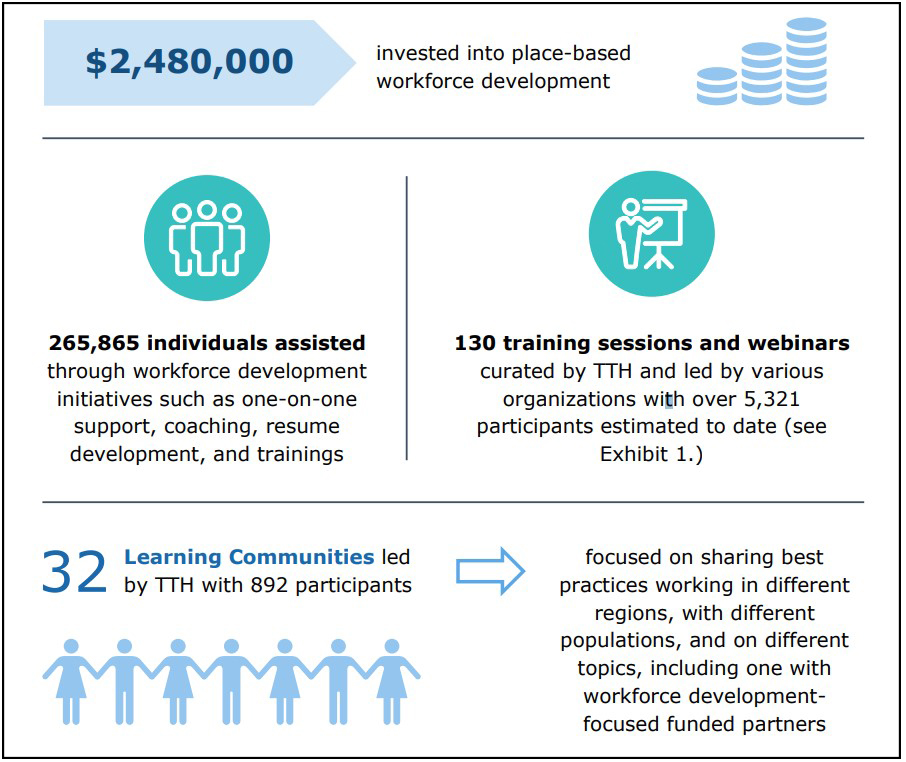
Lessons from TTH can influence future workforce development efforts
- Continue to listen for emergent needs on the ground and provide smaller, targeted funding opportunities to local organizations that best understand the local workforce and economic threats and their implications.
- Engage workforce development partners as early as possible to create longer, more resilient recruitment periods to enhance participant uptake and account for potential programmatic disruptions.
- Re-evaluate job requirements to be more holistic, inclusive, and reflective of the value of lived experience. Removing requirements such as the number of years of experience, the requirement to have a reliable car, and the completion of higher education can lower common barriers to employment.
- Deploy funds quickly and with limited requirements. The more ably service providers can pivot in response to the onslaught of challenges presented by a dynamic situation like the COVID-19 pandemic, the more quickly local needs can be met.
- Balance breadth with depth. In some cases, it might be more impactful to fund fewer sites to allow them to dive deeper into their models for workforce development.
- Embed technical assistance support to expand the organizational capacity of workforce development organizations. Some examples of topics that may be useful are included in Exhibit 1.
- Facilitate diverse opportunities for professional development for staff including topics that support broader organizational needs that would strengthen organizations for future opportunities. Some examples are found in Exhibit 1.
- Fund small projects, that when thoughtfully designed and rooted in cultural humility, can create strong ripple effects. Workforce development funded partners reported several instances of these lasting impacts.
- Scaling up workforce training programs in partnership with county departments and with employer partners; creating pathways to permanency programming for populations who are underserved and have high barriers to employment, including individuals who were hired in temporary positions for COVID initiatives.
- Enhanced visibility and community awareness of workforce development service provider organizations, and the ability to serve clients well beyond the reach of those traditionally served.
- The ability to leverage the learnings from TTH to secure additional funds to sustain ongoing workforce development recruitment efforts and projects.
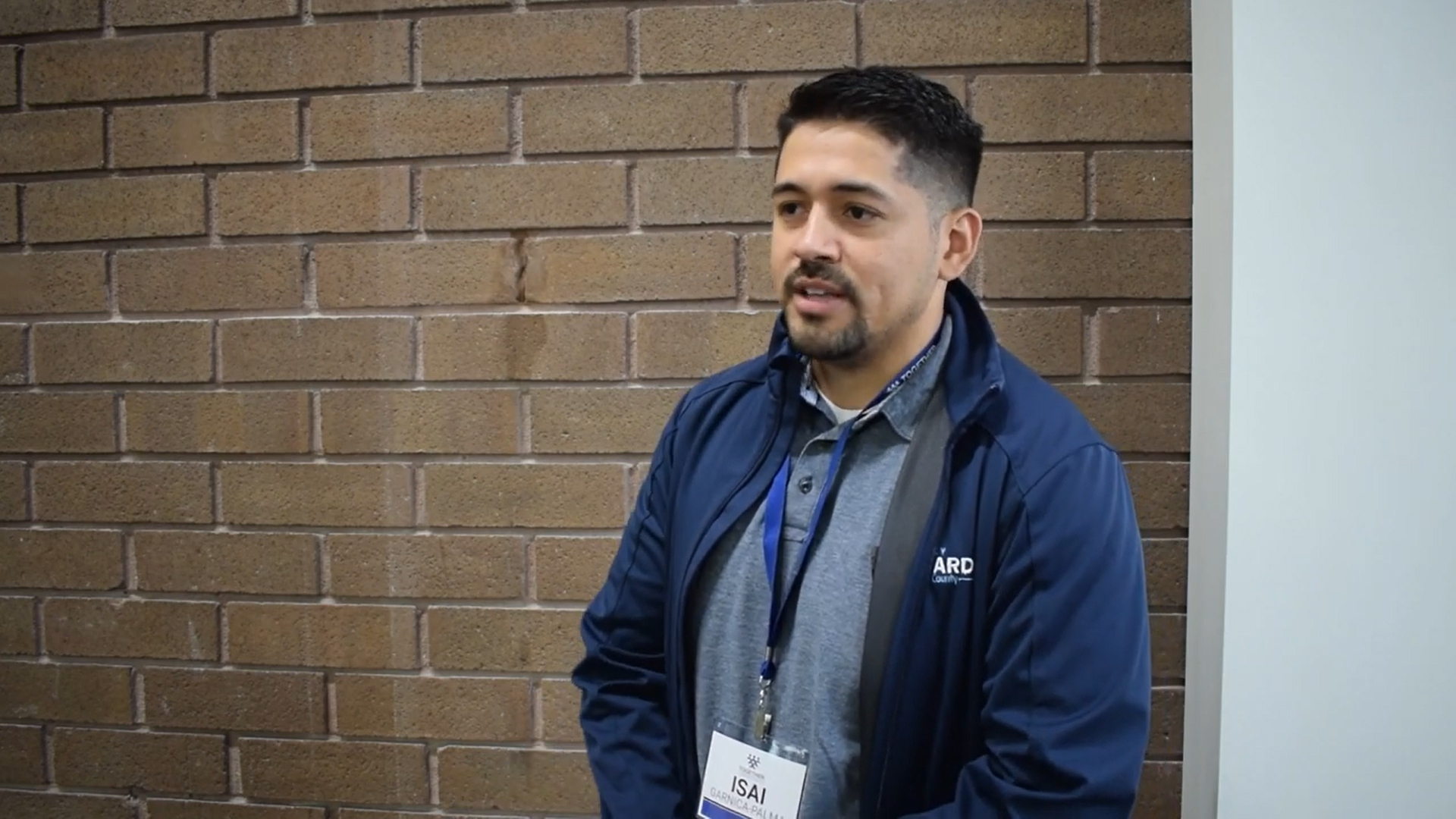
“The Together Toward Health funding allowed us to help our community. We were able to identify leaders in our community and get them trained and certified as community health workers… It really helped increase vaccination rates,” shared Isai Garnica-Palma, Valley Onward, Together Toward Health Grantee.
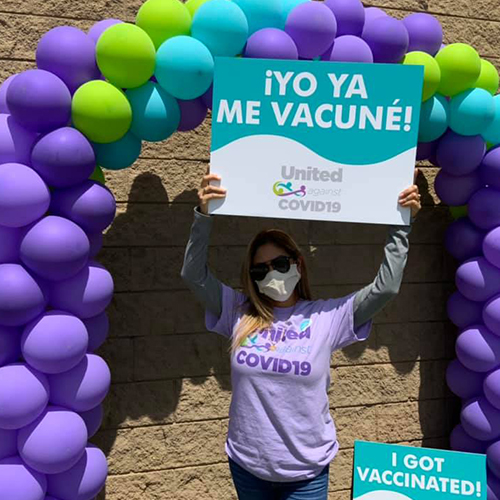
Together Toward Health: Supporting Communities Through COVID-19 and Beyond
Thanks to Together Toward Health funding and support, CBO grantees have coordinated access to get thousands of California farmworkers vaccinated, conducted outreach to elders about vaccine access and appointments, hosted online live Q&A sessions, trained outreach workers and system navigators, and more. Guided by equity, Together Toward Health is supporting education, awareness and outreach to mitigate the spread of COVID-19, increase vaccine awareness and uptake, and provide workforce development strategies to strengthen economic resilience.
Originally published by Together Toward Health
Work With Us
You change the world. We do the rest. Explore fiscal sponsorship at PHI.
Support Us
Together, we can accelerate our response to public health’s most critical issues.
Find Employment
Begin your career at the Public Health Institute.
